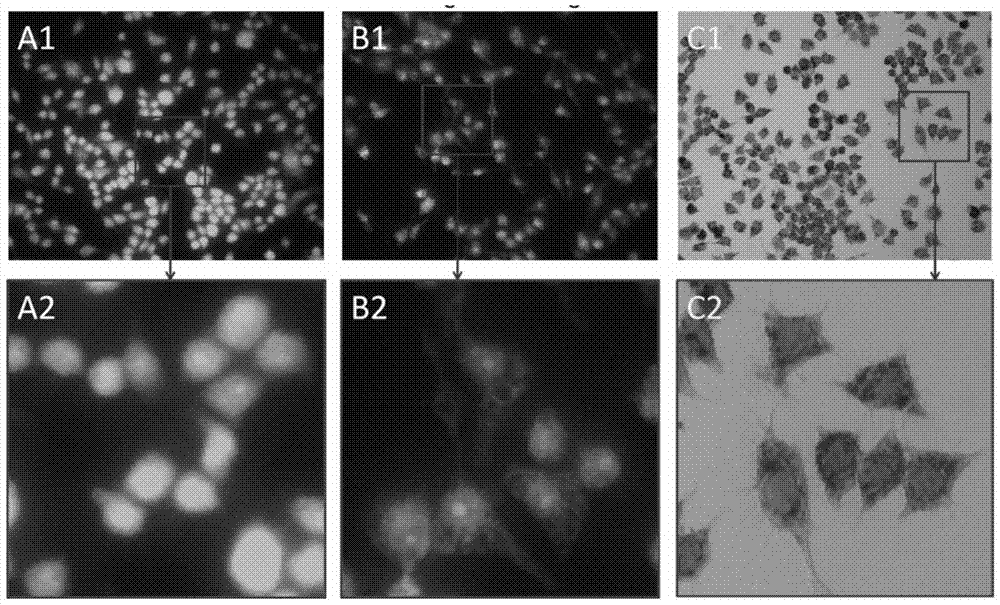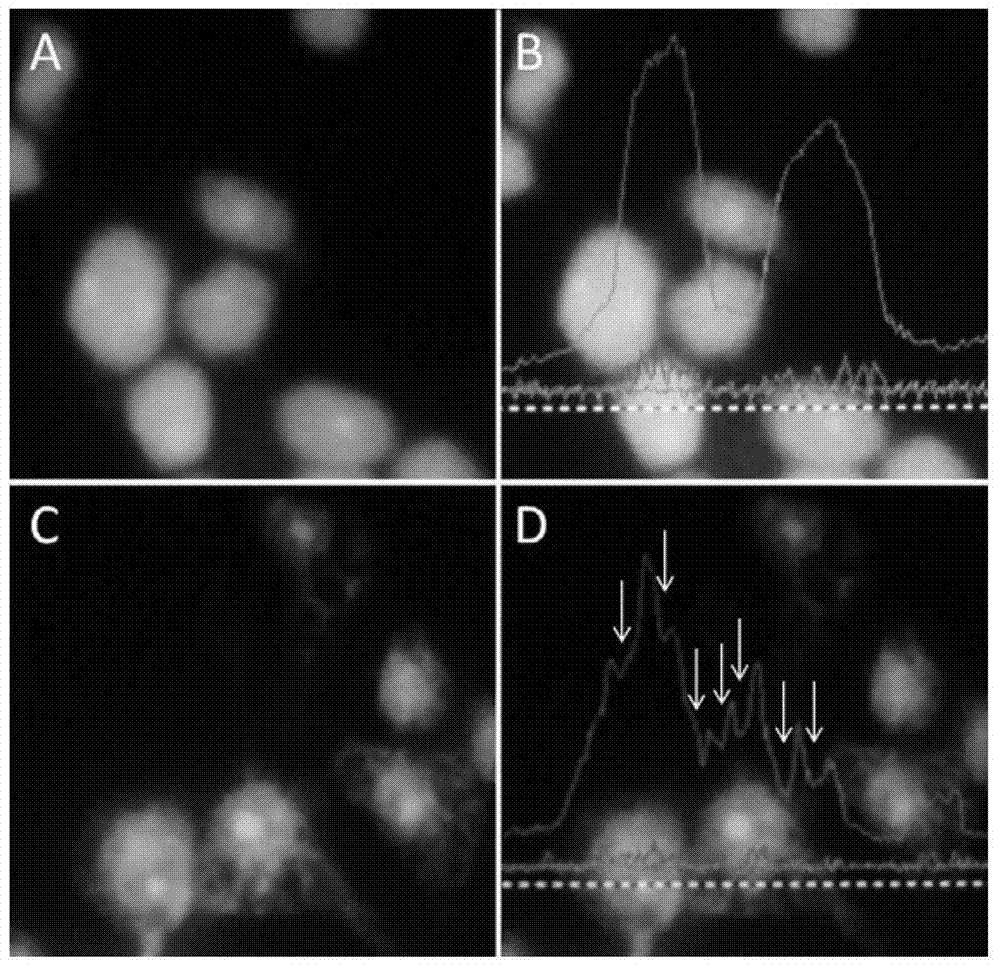A fluorescent negative staining method for detecting living cells
A negative staining method and live cell technology, which is applied in the direction of fluorescence/phosphorescence, preparation of test samples, material excitation analysis, etc., can solve the problems of cell loss of viability, inapplicability of sampling and detection of precious cell samples, and impossibility of dynamic observation, etc. Achieve the effect of maintaining vitality and easy and convenient dyeing
- Summary
- Abstract
- Description
- Claims
- Application Information
AI Technical Summary
Problems solved by technology
Method used
Image
Examples
Embodiment 1
[0031] Example 1: SPIO labeling mouse macrophage RAW264.7 cells
[0032] Take well-grown RAW264.7 cells, add SPIO (final concentration: 25-50 μg / ml) into the cell culture system, and place at 37°C, 5% CO 2 After incubation in an incubator for 6-24 hours, the labeling rate of SPIO on cells is close to 100%, and has no adverse effects on cell viability, growth, differentiation and other biological activities, and has no obvious cytotoxicity.
Embodiment 2
[0033] Embodiment 2: the Prussian blue staining method of cell slide
[0034] Place the sterile coverslip in a six-well culture dish, add SPIO-labeled RAW264.7 cells to prepare cell slides, fix with 4% paraformaldehyde for 10 minutes; wash with distilled water twice, each time for 2 minutes, and then dry in the air Dry; put the cell slide into Perls solution (preparation: 25ml of 20% potassium ferrocyanide aqueous solution, 25ml of 2% hydrochloric acid aqueous solution. The two solutions are prepared and stored separately, mixed in equal amounts before use, and used after filtration) for 30 minutes; distilled water Fully rinse; 0.2% Nuclear Fast Red (preparation: dissolve 10g of aluminum sulfate in 100ml of distilled water, add 0.2g of Nuclear Fast Red after dissolving, mix well, and put it in a 37°C water bath for 1 hour, shake it from time to time to fully dissolve it Filtered for use) counterstained for 20-30 minutes, rinsed with distilled water, and dried. Judgment of sta...
Embodiment 3
[0036] Example 3: CFSE fluorescent negative staining detects SPIO uptake by living cells
[0037]Prepare the SPIO-labeled RAW264.7 cell suspension, and adjust the cell concentration to about 107 cells / ml with an appropriate medium. Take 1ml of cell suspension into a test tube, add an appropriate amount of CFSE working solution, mix gently (the final concentration of CFSE is set to 0.1-2μM, and the optimal staining concentration is determined by the results of the preliminary experiment), and culture at 37°C Incubate in the box for 15-30 minutes. Remove the supernatant after centrifugation, add 2ml of PBS solution, remove the supernatant after centrifugation, and repeat this operation once. Add appropriate medium to make cell suspension. Drop 10 μl of cell suspension on a glass slide and observe with a fluorescent microscope. Results criteria: Negative (-), no fluorescent negative staining area; positive (+), including 1-2 fluorescent negative staining areas; positive (++), ...
PUM
 Login to View More
Login to View More Abstract
Description
Claims
Application Information
 Login to View More
Login to View More - R&D
- Intellectual Property
- Life Sciences
- Materials
- Tech Scout
- Unparalleled Data Quality
- Higher Quality Content
- 60% Fewer Hallucinations
Browse by: Latest US Patents, China's latest patents, Technical Efficacy Thesaurus, Application Domain, Technology Topic, Popular Technical Reports.
© 2025 PatSnap. All rights reserved.Legal|Privacy policy|Modern Slavery Act Transparency Statement|Sitemap|About US| Contact US: help@patsnap.com



